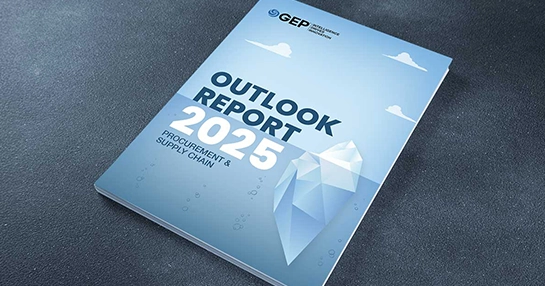
The AI Race Isn’t Just About Tech — It’s About Supply Chain Agility
- Many businesses plan to leverage AI to automate routine, time-consuming processes.
- To implement their plan, they must first build an agile supply chain that can secure the infrastructure needed to support technology.
- As the race to deploy AI picks momentum, companies will scramble for data centers, compute hardware, power and telecom infrastructure.
April 09, 2025 | Supply Chain Strategy 3 minutes read
As a procurement professional, you may be looking to leverage the latest AI technology and tools to streamline source-to-pay (S2P) operations. In fact, you may already be exploring use cases of AI at different stages of the S2P cycle.
But the question is: Can you get an edge in a highly competitive market simply by leveraging AI? How will you sustain and scale technology deployment in the long run?
The short answer: To benefit from AI deployment and make the most of technology, you must build an agile and resilient supply chain. This will help to build and scale faster and shield against infrastructure-related risks.
Data centers, computer hardware, power generation, telecom infrastructure — these have emerged as the real battleground as all businesses look to deploy AI at the same time. Those who can strengthen their supply chains and secure the infrastructure will emerge as the new market leaders.
Scrambling for Infrastructure
The AI race isn’t just about leveraging advanced algorithms and developing better AI models — it’s about developing and securing the infrastructure needed to support them. To win this race, businesses must build agile supply chains.
Here are six supply chain capabilities businesses need to build:
1. Data Center Construction
AI models need next-gen data centers to get staggering amounts of computational power. Not surprisingly, tech giants including Microsoft, Google and Amazon are scrambling to build their data center capacity. They are also exploring new designs such as underwater data centers and liquid cooling.
2. Data Center Infrastructure Equipment
Along with data center construction, businesses also need to invest in specialized cooling systems and energy-efficient hardware. They must integrate liquid cooling, high-efficiency power distribution and alternative energy solutions to lower operational costs. To boost security and safeguard infrastructure, they also need to implement AI-driven security systems, advanced surveillance equipment and multi-layered access controls.
3. Compute Hardware
To support AI workloads and maximize performance, businesses need advanced computing clusters, GPUs, AI accelerators and networking components. They also need to integrate these components into their existing IT infrastructure.
4. Power Generation
Sustained use of AI and data centers requires major innovations in power generation and distribution. Leading technology firms are therefore investing in renewable energy projects, nuclear power partnerships and grid infrastructure to expand their power infrastructure. In 2023, Microsoft signed a nuclear energy deal with Helion Energy to secure low-carbon electricity for AI workloads.
5. Real Estate
Tech majors, such as Meta and Google, have already acquired land for AI data centers, highlighting the importance of securing suitable locations for AI infrastructure. The choice of location depends on factors such as energy availability, climate conditions, and proximity to high-density population areas for low-latency processing. Companies are likely to compete for prime locations near power sources and fiber-optic networks.
6. Telecom Infrastructure
AI models need a robust telecom infrastructure to quickly move massive amounts of data. Fiber-optic networks, 5G and edge computing are critical parts of the AI supply chain. Tech giant Meta has already announced its plan to build a 50,000 km sub-sea cable across the world. This will be the world’s longest underwater cable project that would provide industry-leading connectivity to five major continents.
Also Read: Lean Vs Agile Supply Chain – Choosing the Right Approach
The Takeaway
Almost all businesses are likely to deploy AI models and smart algorithms. But this isn’t enough to navigate the AI revolution. To lead (and sustain) the AI race, you must build and scale the supporting infrastructure. You must secure the supply chain of chips, energy and telecom networks.
The real battle now is for resources. Businesses that can secure the infrastructure needed to support AI operations will emerge as market leaders.
To know more about how supply chain capabilities can help you lead the AI race, download the latest GEP white paper.



